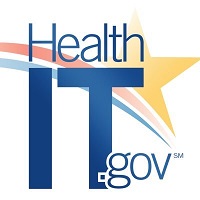 How Electronic Prescribing of Controlled Substances Has Impacted Opioid Prescriptions in New York
How Electronic Prescribing of Controlled Substances Has Impacted Opioid Prescriptions in New York
By Yuriy Pylypchuk and Carmen Smiley, ONC
Twitter: @ONC_HealthIT
When a family member, friend, or loved one develops an opioid addiction, few people know how to respond. Similarly, it is often difficult for healthcare providers to know how to best prevent, detect, and treat opioid use disorder, and almost every provider in the country has had encounters with patients experiencing addiction. As trusted guardians of their patients’ well-being, providers are exploring how to use technology to augment their experience, skill, and knowledge for improved care. Concurrent with technological innovation, more states have adopted policies intended to drive widespread adoption and use of technology such as prescription drug monitoring programs (PDMPs) to view patient medication histories and electronic prescribing of controlled substances (EPCS) to treat pain.
New evidence from ONC research shows that mandating PDMP checks prior to prescribing and using EPCS technology to prescribe controlled substances in New York helped to reduce the number of Medicare Part D opioid prescriptions. In 2012, New York passed the Internet System for Tracking Over-Prescribing (I-STOP) Act to better regulate the flow of prescription pain medications and other controlled substances within the state. Beginning March 27, 2016, the law mandated electronic prescribing for all prescribed medications, including controlled substances, among other requirements.
What has the impact been so far?
The ONC study finds evidence that the I-STOP mandates reduced the number of Medicare Part D opioid prescriptions written per prescriber per year and the number of Part D beneficiaries receiving opioids per prescriber per year. Spending on opioid prescriptions dropped in the first year following implementation, and evidence suggests that prescribers may have changed the frequency of their opioid prescriptions in response to the mandate.
New York’s I-STOP Act is an example of a state law that leverages health information technology, specifically EPCS, to combat the opioid crisis. Other states could consider similar approaches. When used in combination with other technologies like PDMPs and clinical decision support applications, I-STOP can result in a significant reduction in opioid use and overdose, as well as costs associated with treating patients experiencing pain.
This article was originally published on the Health IT Buzz and is syndicated here with permission.
